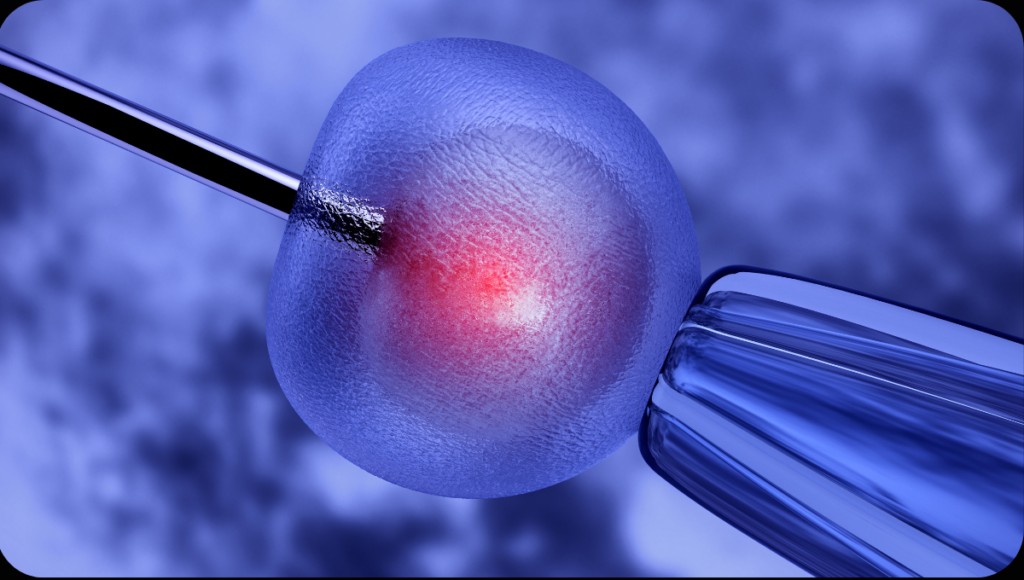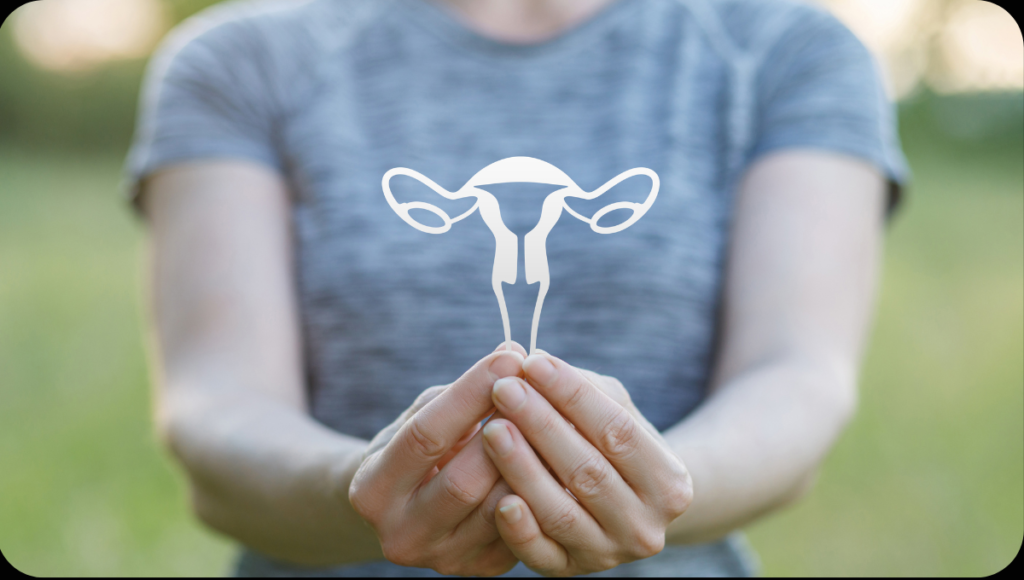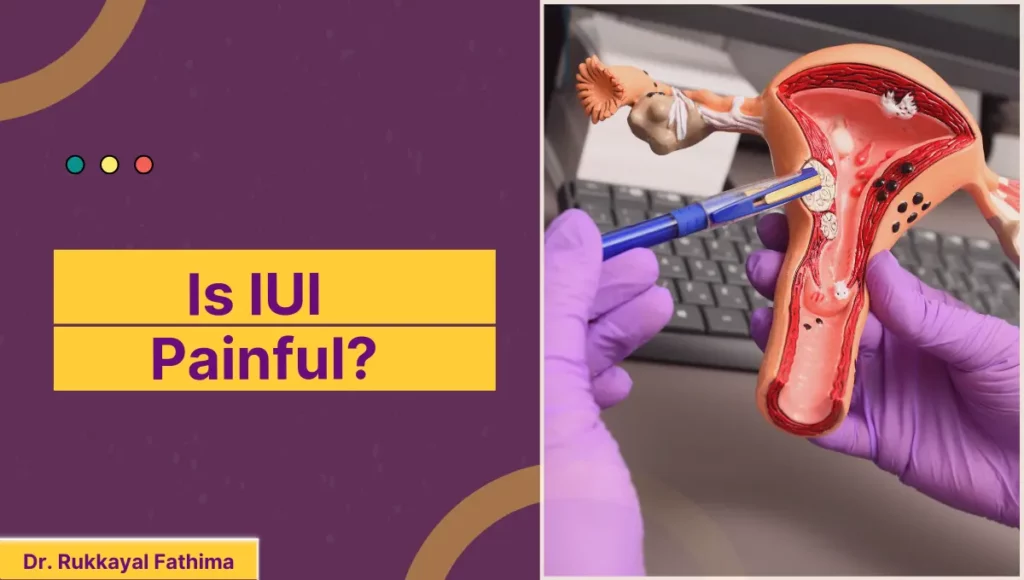People who have difficulty conceiving turn to a variety of different methods to increase their chances of becoming pregnant. IUI, also known as intrauterine insemination, is a common fertility treatment that many women choose to undergo.
IUI is a semi-invasive assisted reproductive technique that involves placing sperm directly inside the uterus. Through this method, the sperm have significantly easier access to the egg, which, in turn, results in an increase in the percentage of successful pregnancies.
Therefore, the purpose of this article is to provide an explanation of how the process works, as well as whether or not it is painful.

Is IUI Painful?
Well, it depends on the person. In most cases, introducing sperm to the uterus for the first time is associated with a level of discomfort considered quite severe.
It’s possible that some people won’t be able to stand it. But for most women, this procedure causes very little discomfort.
Because IUI is a minimally invasive procedure, patients do not require sedation or the use of pain medication while undergoing the procedure. IUI is performed when it is anticipated that you will be ovulating.
It involves injecting sperm cells directly into the uterus to bring the sperm closer to the eggs. This allows the sperm to swim through the uterus and reach the eggs more efficiently.
Therefore, the process of fertilizing the egg is facilitated by reducing the amount of time that the sperm must travel and the distance that it must travel to reach the uterus.
As the catheter is inserted through the cervix, certain patients may experience some mild cramping and minor pinching sensations. Most of the time, however, you will feel discomfort as the catheter is inserted into the cervix.
If the patient reports an increase in the intensity of the sensation or reports that it is becoming more unpleasant, they must immediately inform their doctor about their situation.
It is not uncommon for patients to experience cramping or light bleeding as a side effect of the treatment. Even ovulation can cause some women to experience cramping, and this is especially true if the patient is taking medication to prevent ovulation.
However, in most cases, the discomfort disappears almost immediately after the catheter is removed. If the tube scratches the cervix, it is possible that a very small amount of bleeding will occur; however, this is not a cause for concern.
Because the IUI procedure only takes a few minutes, any discomfort you experience will last only for a short time.
How does IUI Work?
IUI is a fertility technique that is known for being one of the simplest and least invasive options. In most cases, the process can be completed in fewer than 15 minutes.
During the procedure, a thin, flexible catheter is threaded through the vagina, past the cervix, and into the uterus. The sperm sample that has been collected is ejected through the catheter.
IUI Procedure: Step by Step
The IUI procedure is a fertility treatment designed to increase the chances of sperm reaching the egg, thereby enhancing the likelihood of fertilization and pregnancy. It is typically recommended for couples with unexplained infertility, mild male factor infertility, or women with cervical mucus problems.
Preparation and Timing
The process begins with the woman’s menstrual cycle, closely monitoring her ovulation to determine the most optimal time for insemination. Ovulation can be naturally tracked or induced with fertility drugs.
Ovarian Stimulation
In some cases, women undergo ovarian stimulation with fertility drugs to increase egg production. This step involves regular monitoring through ultrasound and blood tests to track the development of the eggs and timing of ovulation.
Sperm Collection and Washing
On the day of IUI, sperm from the partner or a donor is collected. The sample undergoes a “washing” process to concentrate the healthiest sperm and remove impurities.
Insemination Procedure
The washed sperm is placed into a thin catheter, which is then gently inserted through the cervix into the uterus. This process is carefully timed to coincide with ovulation to maximize the chance of fertilization.
Post-procedure Care
After insemination, you may be advised to rest for a short period, but normal activities can usually be resumed quickly. Progesterone may be prescribed to support the uterine lining and encourage implantation.
Follow-Up
A pregnancy test is typically recommended about two weeks after the procedure to determine if the IUI has been successful.
What To Expect After IUI?
Following the IUI procedure, the woman can immediately return to regular activities. On the other hand, she might be advised to refrain from engaging in sexual activity and strenuous exercise for a few days.
It is normal for the woman to experience some light cramping and spotting for the first day or two after the procedure, but these symptoms should go away relatively quickly and are not cause any concern.
The likelihood of a successful outcome from an IUI procedure is contingent upon several variables, such as the age of the woman undergoing the procedure, the underlying cause of her infertility, and the viability of the sperm that is utilised.
Intrauterine insemination has a success rate of between 10 and 20% per cycle.
In the event that the woman does not become pregnant after undergoing several cycles of intrauterine insemination (IUI), the attending physician may suggest other fertility treatments, such as in vitro fertilization (IVF).
Ovarian Induction
The amount of distance that sperm have to travel to reach an egg is significantly decreased during IUI, which increases the likelihood that the procedure will result in a successful pregnancy.
On the other hand, we frequently combine IUI with ovarian stimulation to raise the chances of IUI being successful even further.
Ovarian induction uses fertility medication to stimulate the development of one or more mature follicles, each of which contains an egg. Ovarian induction can be performed on either one or both of the patient’s ovaries.
We can also stimulate ovulation with fertility medication, enabling us to more precisely time it with the IUI procedure.

Is Ovarian Induction Painful?
Ovarian induction is not typically as painful for the majority of the patients; however, some level of discomfort is to be expected.
In most cases, injections are the method of choice for delivering the fertility drugs that are used to stimulate ovulation.
Since the needle that is used is quite small, and since it is not necessary to inject the shots into the muscle, they should not cause an excessive amount of irritation.
Nevertheless, this procedure may be more challenging for some patients with an adverse reaction to injections.
Ovarian Induction Side Effects
There is a possibility that ovarian induction will result in some minor adverse effects, including cramping, bloating, and headaches.
These adverse effects are comparable to those that a woman might go through during her regular menstrual cycle.
Again, even though this might make patients uncomfortable, they should not be in any kind of pain.
Who Can Get the IUI Treatment?
IUI is typically recommended as a treatment option when the sperm count of the male partner is low or when his sperm motility is insufficient. In addition, the following conditions are ideal for intrauterine insemination.
- Unmarried women who wish to have a child.
- Males who have an inadequate number of sperm
- Infertility that has not been diagnosed
- Problems with mucus production in the cervical region or the cervix
- Very mild endometriosis
- Those who struggle to maintain an erection or have trouble ejaculating
- Couples of the same sexual orientation who are hoping to have children
- Couples who are concerned that their unborn child will inherit genetic abnormalities from the male partner.
Intrauterine Insemination (IUI) may also be a viable treatment option for various recognized cervical conditions, including cervical mucus and scar tissue resulting from previous surgical procedures.
IUI is not recommended for a patient with endometriosis, an illness affecting the fallopian tubes, or a previous history of pelvic infections.
It is possible that undiagnosed reproductive issues could hinder your ability to conceive. Some of these issues include an imbalance in hormones or abnormalities in your uterus.
Who Should Avoid IUI Treatment?
IUI treatment is not something that medical professionals recommend for patients who have certain conditions.
This procedure should not be performed on patients with acute conditions affecting the fallopian tubes or endometriosis ranging from mild to severe.
In addition, ovulation cannot occur in a woman if either of her fallopian tubes has been surgically removed or is blocked.
As a result, they are not the best possible candidates. In addition, the treatment is not even considered in cases where pelvic infections cause infertility.
Also, suppose the male has problems with fertility or a low sperm production rate.
In that case, the IUI procedure might not produce the desired result and is typically not considered a viable alternative.
Conclusion
If you have been trying to conceive naturally but have been unsuccessful, it may be time to consider effective fertility treatments such as IUI. It’s important to speak with a qualified fertility doctor to determine if IUI is the right treatment option for you.
This method is effective for many individuals and has been reported to show favorable outcomes. The majority of people believe the IUI treatment is painful.
The procedure will cause some discomfort in most people. There is a possibility that cramping will take place as the catheter is inserted through the cervix. On the other hand, individuals rarely experience extreme pain.
Frequently Asked Questions
In general, intrauterine insemination, also known as IUI, is thought to be less painful than in vitro fertilization, or IVF.
IUI involves placing sperm directly into the uterus, which may cause some minor discomfort, including a pinching sensation and cramping when the catheter is introduced through the cervix.
However, these side effects typically subside within a few hours after the procedure is completed.
It is generally agreed upon that IUI causes significantly less discomfort than hysterosalpingography (HSG).
A contrast dye is injected into the fallopian tubes and uterus during an HSG diagnostic procedure to check for any obstructions or abnormalities.
This allows the obstetrician to see any abnormalities or blockages more clearly. This procedure has the potential to cause cramping and other uncomfortable side effects.
Pain following an IUI procedure typically occurs after the actual insemination process. Nevertheless, it is not very severe, and it does not last for very long. Patients who experience light bleeding or spotting typically suffer from pain that can last up to two days at most.
When treating issues with fertility that cannot be explained, intrauterine insemination is the method of choice.
In addition, women with cervical mucus problems may benefit from the procedure. IUI has a success rate of between 10 and 20% on the first try of each cycle.
IUI has a variety of advantages, but it also has a few drawbacks, the most significant of which is that it does not solve several issues that are associated with fertility. IUI has a lower chance of being successful than IVF.
IUI is frequently recommended for women having difficulty conceiving due to reduced ovarian reserve or blocked fallopian tubes.
The success rate is subjective and will depend on the severity of the situation and the patient’s underlying condition causing infertility.
The success rate is approximately 38.1% when the blockage is close to the uterus, but it is only 11.7% when it is close to the ovary.





